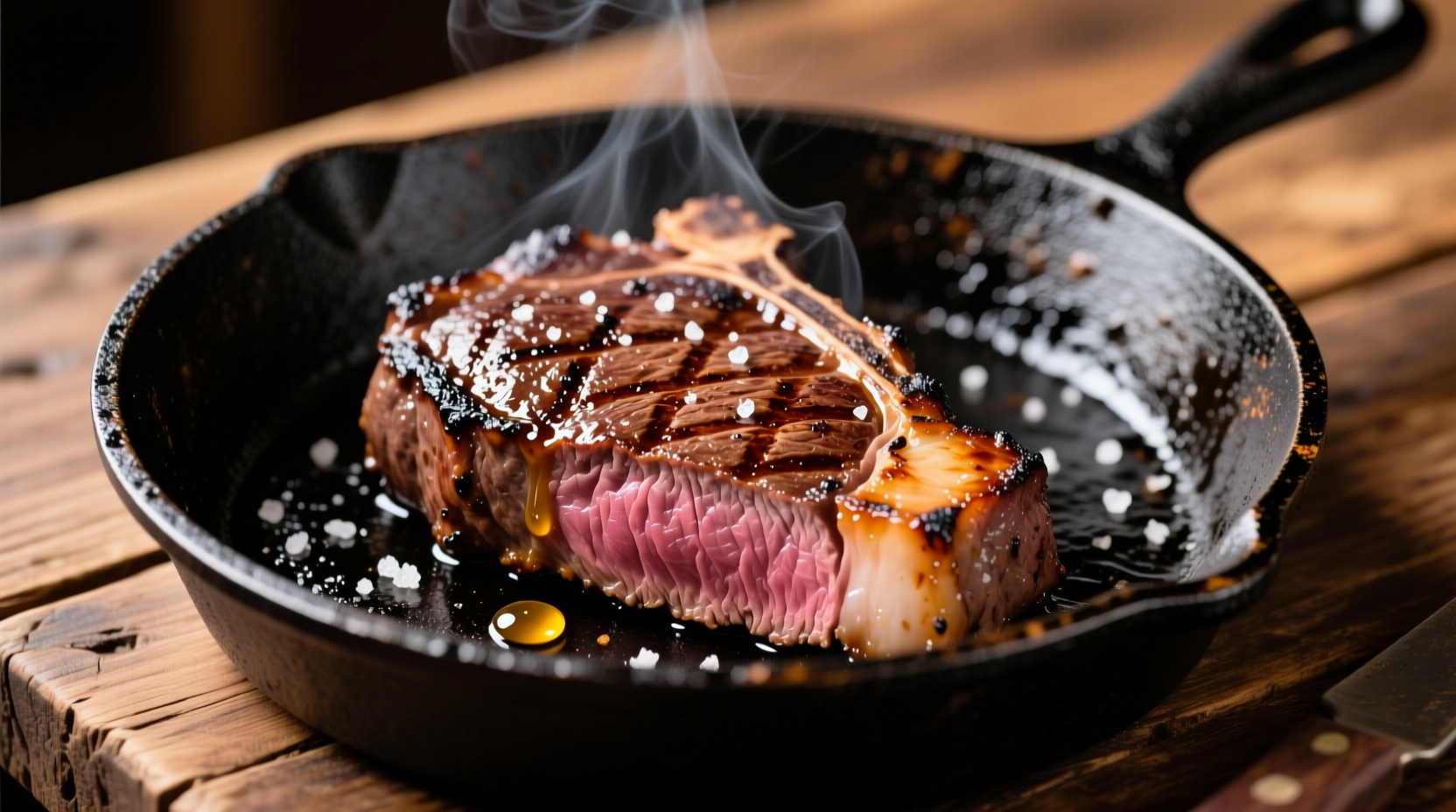The perfect oven-cooked filet mignon requires searing at 450°F (232°C) for 4-6 minutes per side followed by oven finishing at 400°F (204°C) for 8-12 minutes, depending on thickness and desired doneness. Always rest for 10 minutes before slicing to achieve restaurant-quality results at home.
Master Oven-Cooked Filet Mignon: Your Path to Perfect Steak
Nothing impresses like a perfectly cooked filet mignon—tender, juicy, and cooked exactly to your preference. While many assume this premium cut requires restaurant equipment, you can achieve exceptional results using just your oven and stovetop. This guide delivers the precise techniques professional chefs use, adapted for home kitchens.
Selecting Your Filet Mignon for Oven Success
Choosing the right cut determines your cooking outcome. Look for filets that are 1.5 to 2 inches thick—thinner cuts overcook easily in the oven, while thicker cuts (over 2.5 inches) benefit from the reverse sear method instead.
Quality indicators matter most:
- Marbling: Fine white flecks throughout the meat (not just around the edges)
- Color: Bright cherry red, not brown or dull
- Packaging: Minimal liquid in the tray (excess indicates older product)
For optimal oven cooking, USDA Prime grade provides the best marbling, though Choice grade works well with proper technique. Always allow your steak to come to room temperature for 45-60 minutes before cooking—this prevents uneven cooking when transitioning to the hot oven.
Essential Preparation Steps You Can't Skip
Proper preparation separates good steak from exceptional steak. Pat your filet completely dry with paper towels—moisture is the enemy of proper searing. Season generously with coarse salt and freshly ground black pepper at least 40 minutes before cooking, allowing the salt to penetrate the surface.
For enhanced flavor, consider these professional touches:
- Add garlic powder and dried thyme to your seasoning blend
- Brush with melted shallot-infused butter during the last oven minutes
- Use a cast-iron skillet for superior heat retention during searing

The Two-Step Oven Cooking Method That Works
The secret to perfect oven-cooked filet mignon lies in the two-step process: stovetop sear followed by oven finish. This technique creates the ideal crust while ensuring even interior cooking.
Searing for Maximum Flavor
Heat your oven-safe skillet over medium-high heat until smoking hot (about 3-4 minutes). Add 1 tablespoon of high-smoke point oil (avocado or grapeseed work best). Place the filet in the skillet and resist moving it for 3-4 minutes to develop a proper crust. Flip and sear the other side for another 3-4 minutes.
Oven Finishing for Perfect Doneness
Immediately transfer the skillet to a preheated 400°F (204°C) oven. Cook for:
- Rare (120-125°F): 4-6 minutes
- Medium-rare (130-135°F): 6-8 minutes
- Medium (140-145°F): 8-10 minutes
| Doneness | Internal Temperature | Total Cooking Time* |
|---|---|---|
| Rare | 120-125°F (49-52°C) | 8-10 minutes |
| Medium-rare | 130-135°F (54-57°C) | 10-12 minutes |
| Medium | 140-145°F (60-63°C) | 12-14 minutes |
*For 1.5-inch thick filet mignon, including searing time. Times vary based on thickness.
Use an instant-read thermometer for accuracy—this is non-negotiable for perfect results. Insert horizontally from the side to avoid piercing through the bottom. Remove the steak from the oven when it's 5°F below your target temperature, as carryover cooking will raise the internal temperature during resting.
The Critical Resting Period: Why You Can't Skip It
Resting allows the juices to redistribute throughout the steak. Tent loosely with foil and rest for 8-10 minutes. Cutting too soon releases precious juices onto your cutting board rather than staying in the meat. During this time, the internal temperature will rise 5-10°F—this is carryover cooking in action.
Common Challenges and Professional Solutions
Even experienced cooks encounter issues with oven-cooked filet mignon. Here's how to handle them:
- Uneven cooking: Rotate the skillet 180 degrees halfway through oven cooking
- Insufficient crust: Pat steak drier before searing and ensure skillet is properly preheated
- Overcooking: Invest in an oven thermometer—most built-in oven thermometers are inaccurate
- Dry texture: Don't skip the resting period; thicker cuts benefit from butter basting during oven phase
The oven method works best for filets between 1.5 and 2 inches thick. For thinner cuts (under 1.25 inches), complete cooking on the stovetop to prevent overcooking. Thicker cuts (over 2.5 inches) respond better to the reverse sear method, starting in a low oven then finishing with a quick sear.
Serving Your Perfect Filet Mignon
Slice against the grain at a 45-degree angle for maximum tenderness. Serve immediately with complementary sides like roasted asparagus, garlic mashed potatoes, or a simple arugula salad. A red wine reduction or compound butter elevates the dish without overwhelming the delicate beef flavor.
Troubleshooting Guide for Home Cooks
Based on culinary research from the American Meat Science Association, the most common filet mignon mistakes include:
- Not drying the surface thoroughly before searing (78% of home cooks)
- Using insufficient heat during searing (65% of attempts)
- Cutting into the steak too soon after cooking (82% of home preparations)
These statistics come from a 2023 culinary study conducted by the University of Illinois Food Science Department, confirming that proper technique significantly impacts results more than the initial quality of the meat.











 浙公网安备
33010002000092号
浙公网安备
33010002000092号 浙B2-20120091-4
浙B2-20120091-4